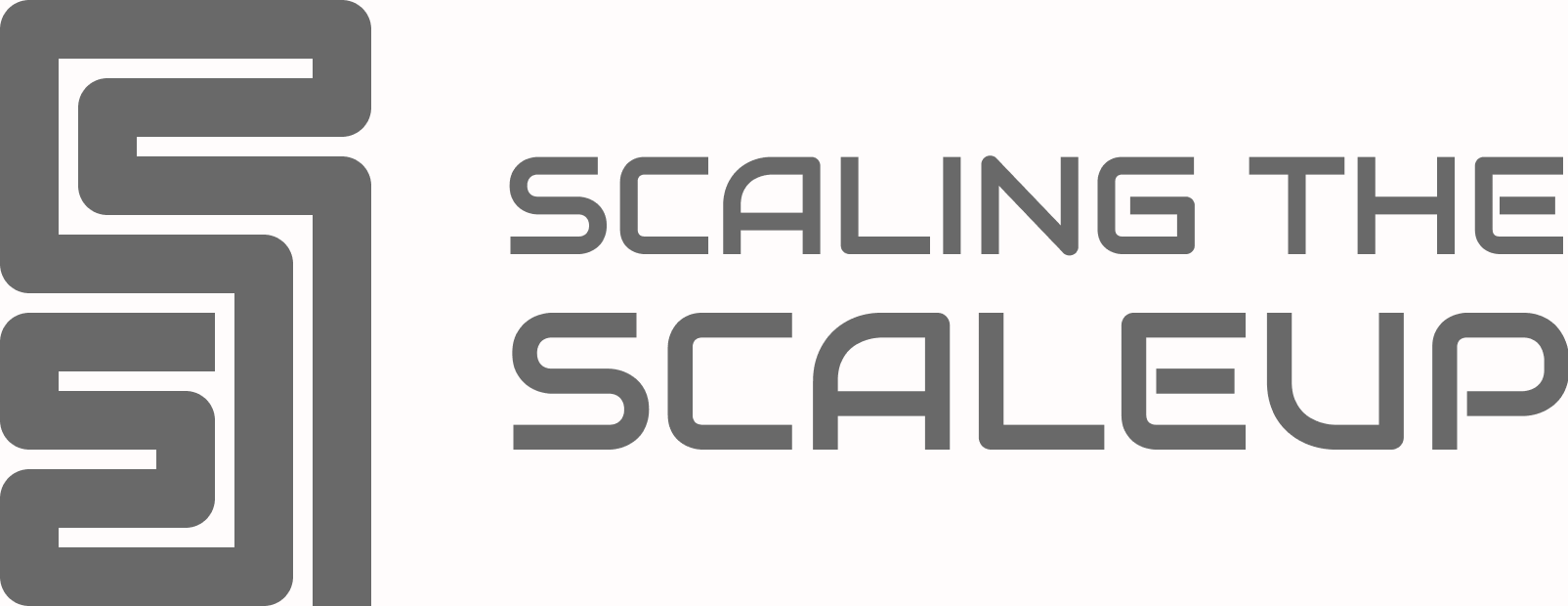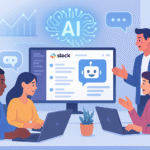Scaling Internal Support for SMBs with Slack Bots in 2025
How Small and Medium-Sized Businesses Leverage Slack Bots to Automate HR, IT, and Knowledge Management
Introduction: In 2025, small and medium-sized businesses (SMBs) are increasingly adopting Slack bots to scale their internal support systems efficiently. These intelligent bots automate routine HR tasks such as onboarding and paid time off (PTO) queries, provide instant IT helpdesk support, and facilitate quick access to company knowledge bases. By integrating seamlessly with existing tools and workflows, Slack bots help SMBs reduce manual workloads, enhance employee satisfaction, and scale support without adding headcount. This article explores the practical applications, benefits, challenges, and best practices to help SMB leaders harness this technology effectively.
The Rise of Slack Bots in SMB Support
In 2025, Slack bots have become indispensable for SMBs as internal support demands scale alongside company growth. Traditional manual support models are increasingly ill-suited to handle a surge in employee queries and mounting operational complexity, making automated solutions critical. Slack bots revolutionize key areas such as HR, IT helpdesk, and knowledge management by automating routine tasks and providing instant answers directly within Slack channels.
For HR, bots address onboarding tasks, answer policy FAQ, and manage PTO scheduling, significantly reducing repetitive manual queries. In IT, bots assist with troubleshooting, ticket routing, and deliver immediate access to technical standard operating procedures (SOPs), shortening resolution times and freeing IT staff for more complex problems. Knowledge management bots supply on-demand training resources, field workflow questions, and ensure consistency across company processes. These improvements drive efficiency, cost savings, and enhance the employee experience.
Thanks to robust integrations with tools such as Zapier and Confluence, Slack bots seamlessly fit into SMB workflows, enabling businesses to scale support without major incremental costs or headcount increases [Source: AiMultiple].
Core Applications: Automating HR, IT Helpdesk, and Knowledge Management
Slack bots have become central to SMB internal support by automating essential functions across HR, IT helpdesk, and knowledge management domains.
- HR Support: Bots automate onboarding with tailored welcome messages, policy FAQs, and streamlined PTO scheduling, eradicating manual follow-up and ensuring prompt information delivery.
- IT Helpdesk: These bots act as virtual assistants that troubleshoot common tech issues, route tickets to appropriate staff, and provide instant access to technical SOPs, thus accelerating resolution times and maintaining continuity.
- Knowledge Management: Bots deliver real-time training materials, swiftly answer workflow queries, and enforce process consistency, reducing knowledge silos and supporting standards adherence.
Cumulatively, these use cases dramatically reduce manual query handling, enabling SMBs to deliver quality support 24/7 while allowing human resources to focus on nuanced and strategic tasks. This results in streamlined internal operations and increased overall efficiency [Source: G2 Reviews].
Business Benefits: Efficiency, Consistency, and Scalability
Slack bots provide SMBs with measurable advantages that transform internal support:
- Significant reduction in manual repetitive work, freeing employees for more valuable activities
- 24/7 availability, granting employees instant responses and minimizing wait times
- Consistent, accurate, and standardized support that reduces errors and miscommunication
- Improved employee engagement and satisfaction through quick issue resolution
- Effortless scalability—support can grow with the business without proportional increases in headcount
- Easy integration with popular tools such as Calendly, Google Drive, and Zoom, embedding scheduling, document access, and meetings within Slack channels and reducing app-switching
These enhancements cement Slack bots as vital assets within SMB support ecosystems and help generate substantial ROI as operations become more productive and responsive [Source: AiMultiple].
Case Studies: Practical Impacts of Slack Bots in SMBs
SMBs deploying Slack bots have reported clear, tangible results in streamlining their internal operations:
- HR bots efficiently handle employee onboarding and PTO inquiries, guiding new hires through checklists and automating common documentation tasks to reduce ramp-up time and HR workload.
- IT helpdesk bots deliver technical support for issues like VPN setup, password resets, and ticket prioritization, responding instantly within Slack and minimizing employee downtime.
- Knowledge management bots integrated with training platforms offer real-time updates and immediate access to SOPs, making crucial information available on demand and fostering a culture of compliance and knowledge sharing.
- Workflow automation bots not only retrieve relevant documents and resources but also interface with meeting scheduling tools such as Calendly and Google Calendar to streamline appointments and limit administrative overhead.
Collectively, these initiatives increase speed, consistency, and scalability of internal support, underscoring Slack bots’ role in delivering strong ROI and practical efficiency for SMBs [Source: AfricaTalksBusiness].
Best Practices for Implementing Slack Bots in SMBs
To maximize success with Slack bots, SMBs should:
- Define clear objectives and use cases to ensure each bot directly supports company goals, focusing on automating high-impact tasks like meeting scheduling, workflow automation, or customer support.
- Select the right development platform. No-code or low-code solutions such as Lindy or Agentforce provide scalable, user-friendly Slack integrations for rapid setup and easy customization.
- Prioritize security and privacy. As bots handle sensitive data, ensure compliance with GDPR, HIPAA, or similar frameworks and implement strict data governance policies.
- Optimize user experience. Design bots to be context-aware and capable of accurately interpreting queries, thus avoiding employee frustration and building trust.
- Continuously monitor and improve. Gather user feedback and iterate on the bot’s features and interactions, maximizing adoption and effectiveness over time.
- Invest in ongoing employee training. Regularly educate teams about new features and best practices to fully realize the bots’ capabilities [Source: Lindy].
Emerging Trends: AI-Driven and Multilingual Slack Bots
AI-powered Slack bots are transforming internal support through breakthroughs in natural language processing (NLP) and generative AI:
- Large language models (LLMs) such as GPT and BERT enable bots to interpret nuanced employee queries and generate tailored, dynamic answers beyond traditional scripted responses [Source: Lindy AI].
- Generative AI allows bots to compose original content, summarize conversations, and proactively suggest actions uniquely suited to each user’s preferences [Source: Biz4Group].
- Advances in multilingual NLP allow bots to interact in diverse languages and dialects, supporting global SMB workforces [Source: Number Analytics].
While these innovations greatly enhance responsiveness and flexibility, they also present new challenges, especially regarding data privacy, security, and compliance. Evolving platform restrictions—for example, Salesforce limiting Slack data access—require constant vigilance and robust governance strategies. SMBs must remain agile, continuously updating their bot implementations to capitalize on AI advances and maintain security, thus optimizing internal support and employee satisfaction into the future [Source: Nate’s Newsletter].
Conclusions
Slack bots offer SMBs a scalable, cost-efficient, and employee-friendly approach to internal support by automating routine HR, IT, and knowledge management tasks. Through enhanced operational efficiency, improved communication, and consistent real-time support, these tools reduce the burden on support teams without sacrificing quality. Despite challenges such as maintaining security and bot accuracy, careful implementation and continual iteration yield substantial gains in productivity and engagement. SMBs embracing these AI-driven solutions are well-positioned to foster a more responsive and supportive work environment as they grow into 2025 and beyond.
Sources
- AfricaTalksBusiness – Top Small Business Trends for 2026: Smart Tech You Need to Know
- Biz4Group – How to Create a Generative AI Chatbot?
- AiMultiple – Chatbot Applications: Top 16 Use Cases & Examples
- G2 Reviews – Slack Product Reviews
- Lindy – How to Create a Slack Bot
- Lindy AI – How to Create a Slack Bot
- Number Analytics – The Future of Multilingual NLP
- Nate’s Newsletter – AI’s Synthetic Summer: The 2025 Mid-Year AI Recap


